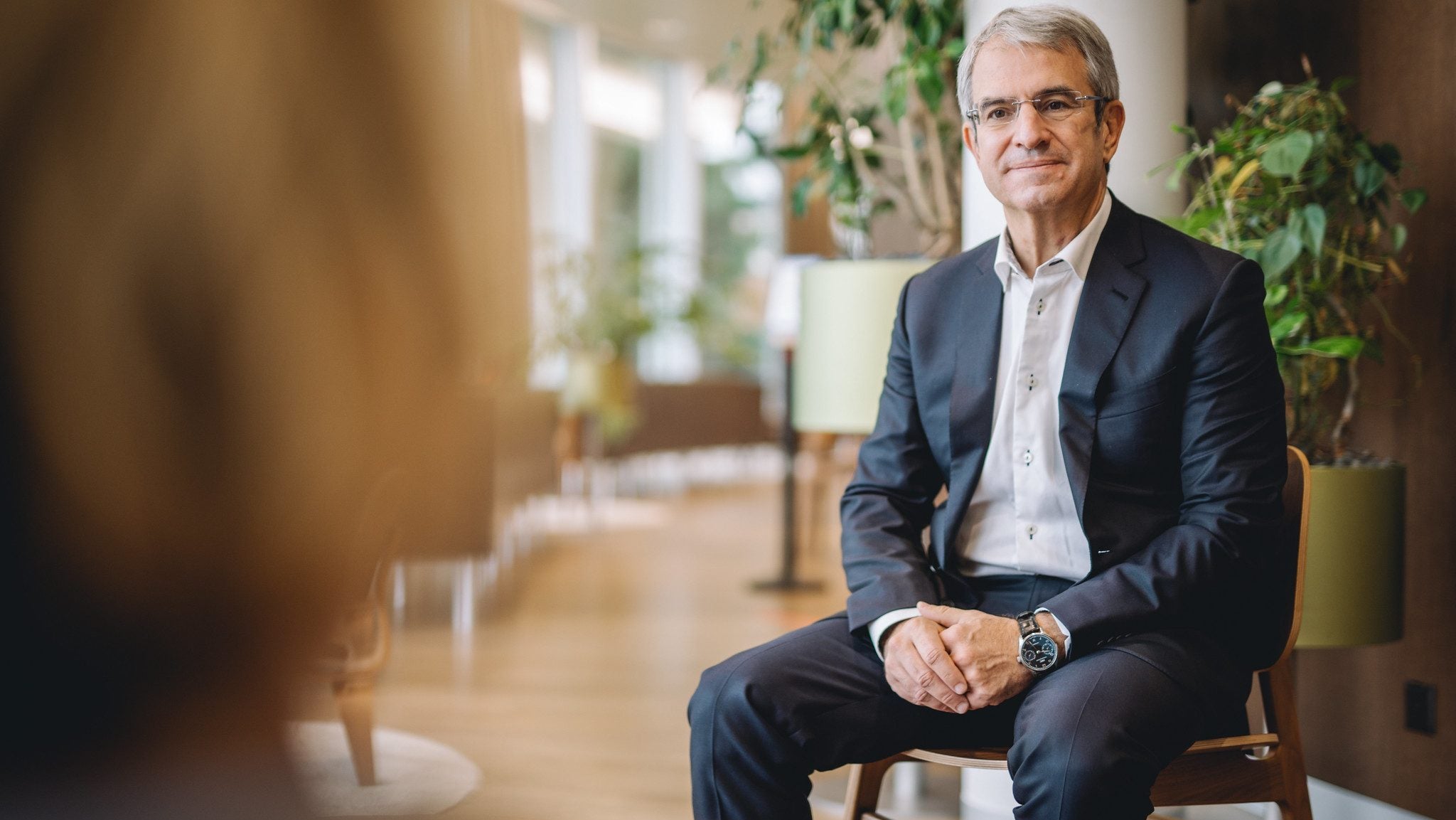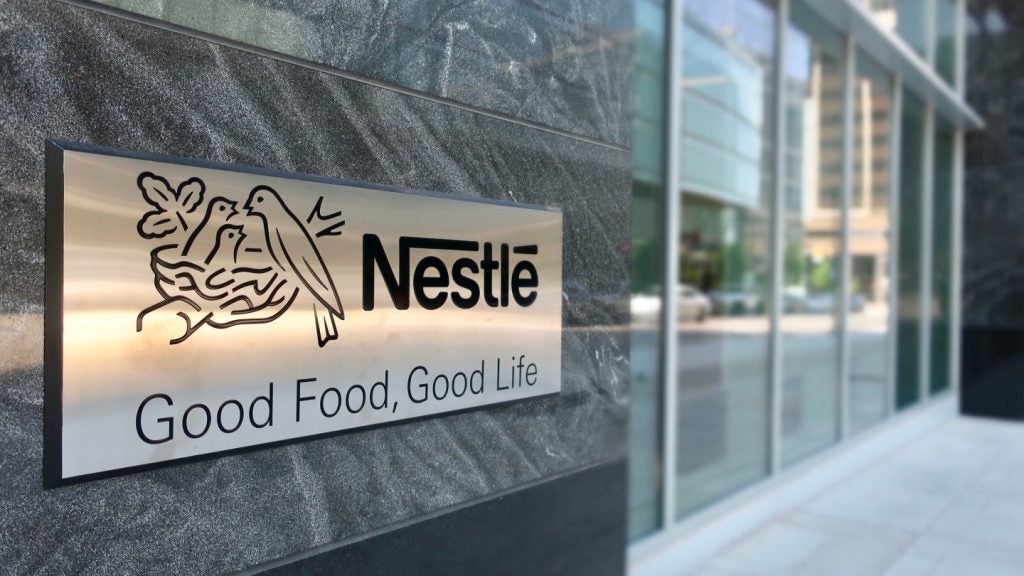

When you’re a SFr93bn ($105bn) business, two percentage points of sales growth is a big deal. But that’s what Nestlé CEO Laurent Freixe has shaved off the mid-term outlook for the world’s largest food company.
Investors knew it was coming. However, it was the size of the downgrade that had been awaited as Freixe chose his first capital markets day as CEO to steer investors to a 4%-plus guide in organic growth.
Nearer term, Freixe had already lowered the 2024 target to “around” 2% in October from “at least” 3%, setting Nestlé on course for what could be its worst annual sales performance in years. But the former chief of the company’s Latin America division stressed he wanted to be “realistic” by presenting “achievable” goals.
With Nestlé’s shares down 23% this year, Freixe laid out his toolbox of fixes as the mid-single-digit growth target of 4-6% set forth by his predecessor Mark Schneider was abandoned, a tad over two months into the job.
‘No pain, no gain’ is a phrase that perhaps aptly sums up Freixe’s endeavours to restore market share and growth, setting out his vision this week for investment, marketing, savings and innovation. But profit margins will be another pain point along that road in the short term.
“We will increase our investment to support organic growth at the same time as we will raise our game in terms of quality of execution,” Freixe said in his opening address.
Access the most comprehensive Company Profiles
on the market, powered by GlobalData. Save hours of research. Gain competitive edge.

Company Profile – free
sample
Your download email will arrive shortly
We are confident about the
unique
quality of our Company Profiles. However, we want you to make the most
beneficial
decision for your business, so we offer a free sample that you can download by
submitting the below form
By GlobalData
“I have been very clear about the need to increase our investment to support growth, to support our brands. And equally clear that this cannot come at the expense of profitability in the medium term.”
“Realistic” targets
The year’s guidance for the benchmark underlying trading operating profit (UTOP) margin was left unchanged at “about” 17% compared to 17.3% in 2023, while underlying EPS remains at “broadly flat” from SFr4.80.
However, Nestlé expects the margin to decline in the new year before rebuilding toward the mid-term target of 17%-plus. Barclays’ analysts estimate UTOP will decline to around 16.3% in 2025.
“The CMD was a realistic assessment of where Nestlé is at,” the Barclays’ team, led by Warren Ackerman, wrote in a research note. “Nestlé’s guidance for 2025 and beyond seemed sensible to us but the reality is that it will take time to fix.”
As Nestlé has started to rein in pricing during the so-called “normalisation” phase, Freixe outlined solutions to a business performance that has been “below our potential” in 2024.
“[Within] the framework of achieving efficiency to generate the fuel for growth, we can invest in our key brands and in our key growth platforms. This drives category growth and market-share gains, leading to sustainable and profitable growth, which in turn brings the benefits of scale and value creation.
“Less is more – focusing on our top brands, on our top SKUs, on our big bets and our most impactful investments. These are all embedded in our plans.”
Nestlé’s “big bets”
Six “big bets” have been selected for 2025 outside of Nestlé’s billionaire categories that each have the “potential to achieve at least” SFr100m in “incremental” sales annually. The plan will be extended over the following two years to get to 15-20 by the end of 2027 with the same individual earnings goal.
As well as core categories such as confectionery, pet food, nutrition and coffee, “significant opportunities” are seen to develop the snacks and treats parts of the portfolio, along with the therapeutic diet segment.
“The areas of health, longevity, women’s health, weight management and affordable nutrition offer significant opportunities for the future. We are organising to accelerate in these areas,” Freixe said.
Not enough attention has been paid to what he called “champions” sitting in Nestlé’s regional and local platforms, a deficit that will be rightsized amid “clear opportunities for growth acceleration”.
Other areas for advancement and scale are ready-to-drink coffee, while the “cold coffee space offers exciting opportunities to reach a new consumer segment and new consumption occasions”, the CEO said.

And Nestlé will seek to strengthen its “geographic footprint” in pet food, especially outside the North American and European markets – Brazil and Africa, Oceania and Asia (AOA), for example.
“The innovation engines are beginning to fire and targets seem realistic. It will take time but short term it has to navigate a tricky consumer and inflation backdrop,” the Barclays’ team wrote.
And Freixe’s push for “bigger, bolder innovation” was applauded, if the strategy is executed with aplomb.
“Whilst this is a very over-used term in staples, the reality is that it does work in staples if done right. Trying to ‘boil the ocean’ is simply an ineffective strategy and what we want to see Nestlé doing is scaling its good ideas more quickly,” the analysts added.
“To that end, it was good to hear Nestlé’s plan to build five-six SFr100m+ investment platforms in each of the next three years.”
Fix, not flog it
While Nestlé simultaneously announced it was spinning off its waters and “premium” beverages business, and perhaps seek a partner, Freixe suggested there were no plans for any major disposals of under-par brands or operations.
“Targeted” bolt-on acquisitions will also be on Freixe’s growth agenda.
“We have businesses operating below their potential. We want to be more systematic in our approach to managing underperformance, diagnosing the issues and swiftly developing and implementing targeted action plans,” he explained.
“As it stands today, we expect to fix, rather than to sell, a majority of these businesses.”
We have businesses operating below their potential.
Nestlé CEO Laurent Freixe
Taking a question on frozen food, Freixe indirectly ruled out a disposal.
“We believe that we can do better, be more relevant. We’ve got an interesting pipeline of innovation and renovation and that’s the plan we are implementing… to position ourselves for success in the long term,” he outlined.
Freixe said he is implementing a “virtuous circle that will fuel the investment behind the brands, behind the growth platforms and the core big bets”.
He added: “Through that, we will generate the organic growth and market-share gains that will deliver the profitability.
“I don’t believe in a system where you cut the cost to improve the margins without shooting the growth, that is not sustainable. That works for a couple of years but will not position you to win and grow in the marketplace.”
Nestlé is also returning marketing investment to pre-Covid levels, or 9% of group sales by the end of next year. Alongside the plan, SFr2.5bn in savings are sought through 2027 on top of the usual annual rate of around SFr1bn. The funds will be reinvested in the business.
“We will polarise investment to support the bigger brands and the biggest areas of opportunity, making sure that all our initiatives reach a level of sufficiency to make an impact,” Freixe said, noting the recent partnership with Formula One for KitKat.
Fragile consumer
On the finance front, CFO Anna Manz stepped into the discussion, explaining some of the pressure on the UTOP margin is coming from elevated cocoa and coffee prices, which will be “mitigated through a combination of pricing and efficiencies”.
However, the same pressures are likely to linger into next year, while Manz also said there are limited signs of the “consumer backdrop improving”.
She framed this year’s “about” 2% organic growth target around inventory reductions – a 30 basis-point weight – and a drag of 100 basis points from market-share losses that Freixe eagerly plans to address.
“Of that growth drag, a bit less than half is due to the impact of consumer hesitancy towards global brands linked to geopolitical tensions, and a little bit more than half is the broader loss of competitiveness,” Manz explained.
“The majority of the underperformance is concentrated in 15 to 20 of our larger cells. Now by cell, I mean a product in a market, so like pizza in the US. For the first time, there’s going to be executive board focus and accountability on the 30 or so most important cells across the group.”
The majority of the underperformance is concentrated in 15 to 20 of our larger cells.
Nestlé CFO Anna Manz
Nestlé also seeks to recover gross margins, which rose 70 basis points in 2023 to 45.9% but fell by 130 points the previous year to 47.8%.
“Over the medium term, and maybe over the slightly longer than medium term, there is no reason why we shouldn’t get back to our historic levels of gross margin,” Manz said.
“You’ve seen us improve considerably over the last two years, in ‘23 and 2024 from the ultimate low that we were at. But it’s not going to be a straight line…there’s more headwinds in 2025 as we see more input costs come through.”
Barclays estimates the gross margin will be down 80 basis points next year: “It doesn’t look to us if consensus needs to move margins down further.
“However, there was also a feeling in some quarters at the CMD that Nestlé should have allowed margins to drop further in 2025 to give it more ‘wiggle’ room in case gross margins are worse or investments need to be higher than 9%.
“For now, given the weak consumer backdrop and persistent inflation, it remains clear that 2025 will be a transitional year.”
Manz suggested Nestlé has the potential to outsmart the 2-3% growth in the food and beverage category, citing data from unnamed research providers, no doubt on the basis of the reforms and strategy Freixe is adopting.
“Our superior mix, which is greater exposure to the more structurally attractive categories, and weighting to the faster-growing geographies and channels, adds around 100 basis points to that, meaning that Nestlé’s category growth is about three to 4% per annum,” she said.
“We believe we can outperform Nestlé’s category growth over the medium term through better focus, rigour and execution.”

